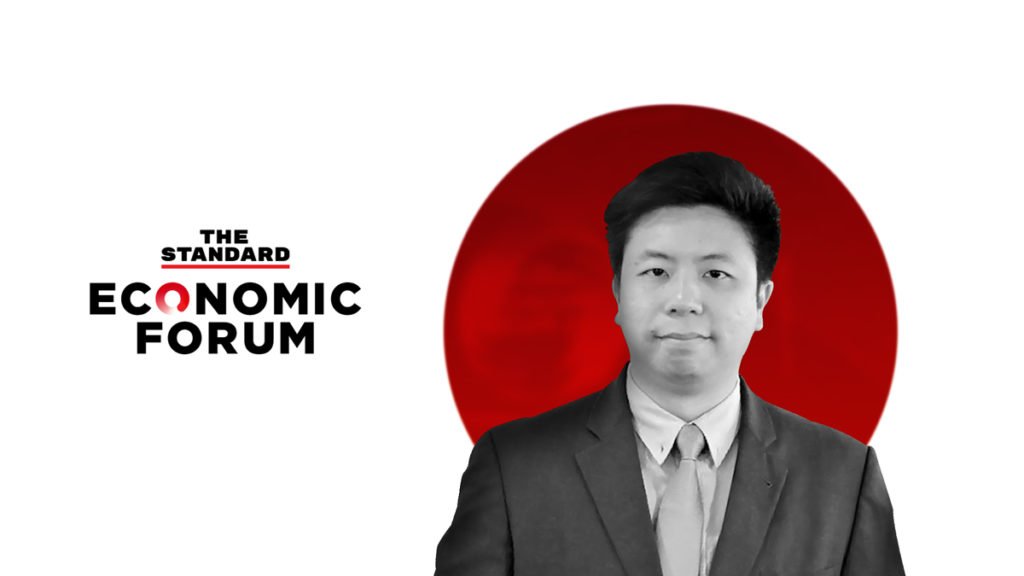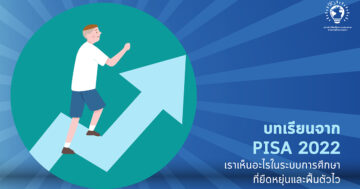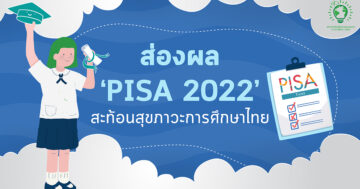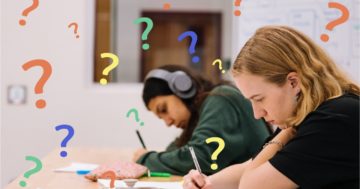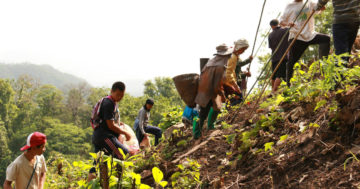Because of the severity of the recent Covid-19 pandemic, Thailand’s economy has recovered in a K-shaped or K-shaped graph, which is an unbalanced recovery pattern. The K-shaped graph depicts the growing gap in learning between affluent and poor people. During the COVID-19 pandemic, every youngster lost their ability to learn. Because they have the means to access learning in different ways, wealthier children are able to adjust and repair learning more rapidly than poor children when they enter the learning rehabilitation stage. However, for the impoverished, the loss of learning worsened until they dropped out of school. Furthermore, the disparity between affluent and poor children revealed other issues such as vision impairments. According to the Thai Optometrist Association’s data, there will be a 2.5-fold increase in change in online learning compared to a traditional course.
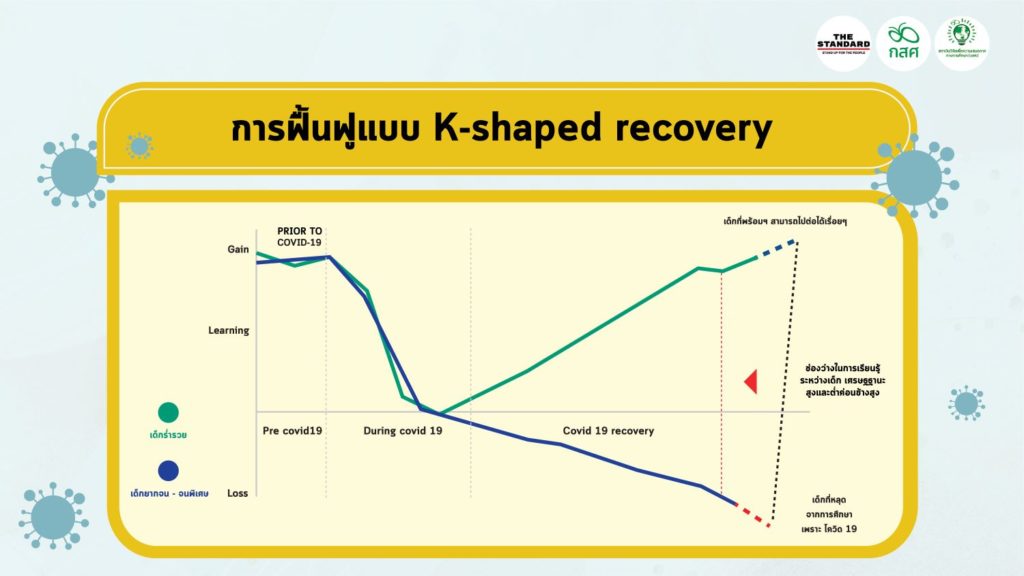
Dr. Kraiyas Phatrawat, Deputy Managing Director of the Equitable Education Fund (EEF), spoke on the topic “K-SHAPED RECOVERY: RESOLVING THAI INEQUALITY, What is the state of Thai inequity? There will be no one left behind.” at THE STANDARD ECONOMIC FORUM 2021 The Great Reform: Thailand’s Tipping Point for a Sustainable Future. And he asserted that education is a systemic issue. The country is dealing with a long-term issue. It’s about how the economy is affected by human capital development. The Equitable Education Fund (EEF) now views itself as a tech company that leverages data to encourage all sectors to more readily contribute in the subject of education equity. Furthermore, according to Dr. Kraiyas Phatrawat, the poorest pay the most for internet access in order to study online, and surveys reveal that almost half of pupils have dropped out since middle school. As a result, Thai society is populated by low-skilled employees who do not contribute to the country’s economic development.
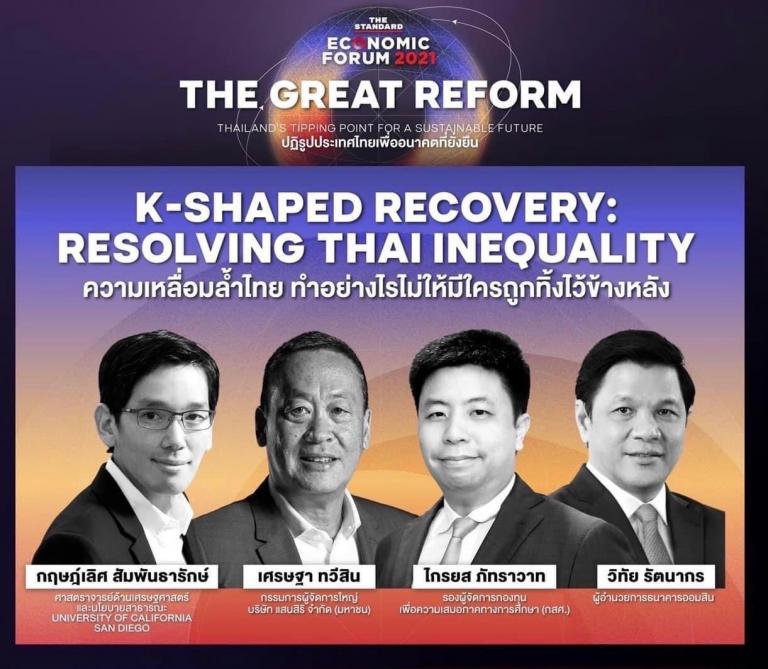
According to data from the Equitable Education Fund (EEF), COVID-19 has had a negative impact. As a result, there are a large number of extremely impoverished children, who are the EEF’s target population. From the second semester of the academic year 2020, the first semester of the academic year 2021 rose by an average of 5-10% every semester. There was no data on continuing education for equal scholarship children in the five affiliations, which accounted for 14.6 percent of the total, namely the Office of the Basic Education Commission (OBEC), the Department of Local Administration, the Border Patrol Police, the National Office of Buddhism, and the Office of the Private Education Commission (OPEC), which stated that poor children have a slim chance of continuing their education.
The methods will convert K-Shaped to V-shaped Recovery.
We predict a V-Shaped Recovery, which means that everyone can return to regular and better lifestyles, just as we expect education to improve. There was a learning recovery or a decrease in the rate of learning loss. Our route to a V-shaped recovery, according to the 2019 pre-Covid-19 Economic Graph (GDP), begins with:
1. Childhood vaccination: Vaccination of parents is a vital prerequisite for allowing their children to attend school since children must be involved and spend their daily lives with their family. If a parent or a family member is infected with the COVID-19 virus, the kid is more likely to get sick.
2. Body and mind are ready to learn: During the semester, individual physical and mental health screenings are critical in preparing children and teens to return to the educational system.
3. Compensatory instruction to make up for a lost time: youngsters suffer long-term learning losses when schools are closed. After school or during a major semester break, supplementary lessons for pupils should be available to make up for a missed time within 1-2 years to narrow the learning gap between affluent and poor children during the previous COVID-19.
4. Follow up children and youth who have not returned to the education system: In the first semester of the 2021 academic year, almost 43,000 children and youth aged 3 to 15 had not returned to school. Therefore, there must be helpful and follow these children back into the education system.
5. All for Education: Private sector and civil society participate and play a role in the rehabilitation of Thai youth children in a sustainable manner.
